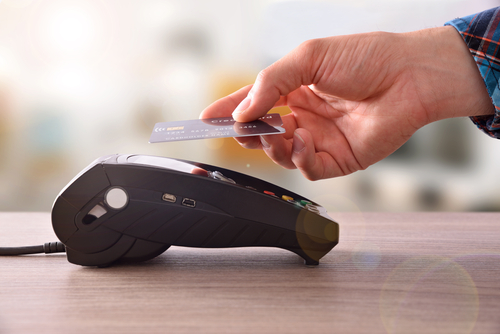
Contactless payments were introduced to the UK 10 years ago today, with a new study revealing that the UK continues to lead Europe in contactless payments.
Since contactless payments were introduced in 2007, Visa’s annual Digital Payments study revealed a total of 66% of Brits have used contactless cards to make a payment.
In comparison to the market across Europe, the UK tops the leader board ahead of Poland, France, Spain and Finland with a record of 34% of users paying via contactless in June 2017 alone.
Beginning with card payments only, contactless has expanded to smartphones using Apple and Android Pay and even smart watches such as the FitBit Ionic, so it’s no wonder 66% of Brits choose contactless as the choice of payment.

Following the introduction of mobile devices making contactless payments, 26% of the UK has chosen this method to make payments in shops.
Age has played a large role in who uses the contactless payment method as Visa’s study found 76% of 18-36 year-olds used contactless to pay for goods and services in 2017, up 11% from last year. However, the over 65s have been more reluctant to embrace the developing payment technology with just over half using contactless.
Predominantly, supermarkets and grocery stores take the most contactless payments followed in turn by fast food chain restaurants and transport.
London dominates the contactless payment consumer market with four in five Londoners making payments via contactless – 12% more than the national average. In comparison, almost half of consumers in the North West and South West regions still have not used contactless for payments at all.
Kevin Jenkins, Managing Director for Visa UK & Ireland, says: “The introduction of contactless cards in the UK ten years ago was a watershed moment for consumers. Whether buying lunch, commuting without having to top-up, queuing at bars and festivals, or donating to charity, Brits have come to expect a painless payment experience.
“Yet there’s still room for the uptake of contactless to grow, particularly outside London and the South East. Our study shows the appetite for adopting new payment methods is greater than ever and with mobile devices opening up myriad new ways to pay, the next ten years looks set to see contactless payments become an ever greater part of our day to day lives.”
Read More: Fitbit steps into the future with contactless visa payments
Encouraging payments via mobile phones has also increased the amount of consumers using their smartphones for online banking to 57%. In comparison, only 35% of those who don’t use mobile phones for payments make online banking statements via their phones.






